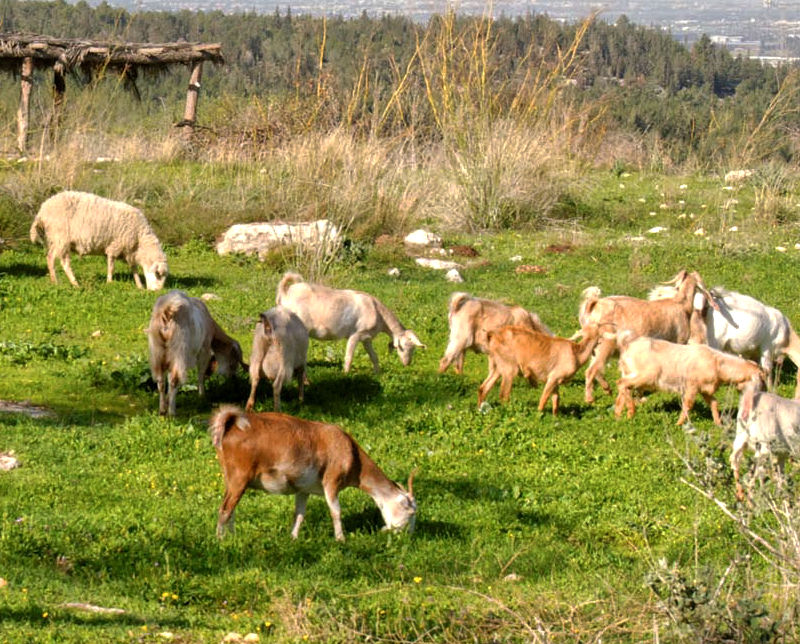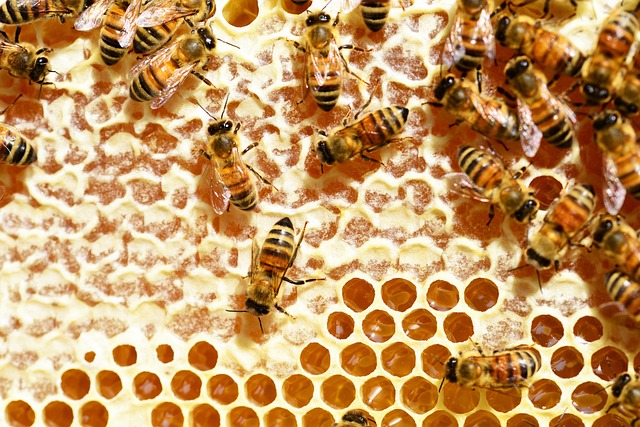
No fewer than twenty times, the Bible refers to Israel as a land flowing “with milk and honey”. It’s a familiar phrase whose meaning we tend to grasp intuitively. Milk and honey are desirable food items, and we get a sense of abundance and plenty from the use of the word “flowing”. This is a reference to the richness and abundance of the land that God had promised to give to Israel. But why “milk and honey”?
Hear, Israel, and be careful to obey so that it may go well with you and that you may increase greatly in a land flowing with milk and honey, just as the Lord, the God of your ancestors, promised you.
Deuteronomy 6:3

In ancient Israel, milk came primarily from sheep and goats. We tend to think first of cows as a source of milk, but flocks were the source of milk for drinking and for dairy products in Israel. In order for milk to flow abundantly, the flocks must be thriving. Lush vegetation is necessary for the conditions that produce thriving flocks. A land flowing with milk is a land with plentiful, flourishing pasture land.
In addition to its connection with the land’s abundant vegetation, milk was a basic, necessary food item in that culture. People relied on their flocks to produce the nourishing milk and dairy foods upon which households subsisted. Milk was a staple.

When it comes to honey, there is a question: does the Bible mean bee honey or date honey, or both? It’s hard to tell, so we don’t know for certain. Deuteronomy 8:8 lists the seven native crops of the Promised Land, “a land with wheat and barley, grapevines and fig trees, pomegranates, olive oil and honey.” After the two grains, the rest of the items are fruit crops. Beekeeping was not yet practiced, so it seems likely that honey refers to a cultured crop here, namely honey made from the fruit of the date palm tree. Date honey was the common sweetener in that day, in addition to being a natural fruit eaten whole.
However, wild bee honey is also well attested in ancient Israel. Beehives are mentioned in the Bible as being found in rocks (Deut 32:13; Ps 81:16), trees (1 Sam 14:25-27), and a lion’s carcass (Judg 14:8-9). Bee honey found in the wild is presented as something sweet and desirable—not a staple that was part of the daily diet, but something rich and special to be enjoyed when it was found. Proverbs 26:16 teaches, “If you find honey, eat just enough; too much of it, and you will vomit.”

We should mention also that the Bible associates honey with God’s words and God’s wisdom. For example, “How sweet are your words to my taste, sweeter than honey to my mouth” (Ps 119:103); “[The decrees of the Lord] are more precious than gold, than much pure gold; they are sweeter than honey, than honey from the honeycomb” (Ps 19:10); and, “Know also that wisdom is like honey for you” (Prov 24:14). There are other examples, and the conclusion is clear: God’s words are to be desired, sought, and relished as a rich delicacy of high status.
If the phrase “a land flowing with milk and honey” means for us to picture date honey in connection with the native date palm tree crop, then it tells us that the land flourished with pasture and agriculture. Because both flocks and crops thrived in the land, it was productive and ready to provide everything the Israelites would need to live there. There is an obvious balance to this, given that shepherding and farming were the main two pursuits by which they subsisted in the land. If the reference is to bee honey, then we see another balance. Milk and honey are at opposite ends of a food “spectrum”: milk was a common, everyday staple on one end, and honey was a rare, sweet treat on the other. What is in mind rhetorically, then, is the single idea of all food, from the most basic necessity to the most desirable luxury. The Promised Land would be a place of abundant provision that gave all kinds of food for a prosperous life.
I tend to think that the honey in the phrase “flowing with milk and honey” refers to the land’s agricultural provision and therefore to dates. But the pairing of milk and honey as two extremes of food that represent all foods is also compelling, and it fits many of the contexts. While it is unlikely that the Bible is referring to both of these simultaneously, both readings are plausible in that they reveal the Promised Land to be a place not only of sufficient provision, but of abundant provision.


